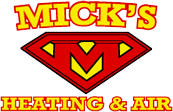With the heightened attention on environmental depletion, consumers are increasingly interested in making sure that they have access to environmentally responsible appliances and information about the environmental impact of their lifestyle and habits. The development of improved technology for heating, ventilation, and air-conditioning systems (HVAC) has allowed for a wider range of convenient options for ensuring excellent indoor air quality in workplaces and residences. Within the HVAC industry, regulatory bodies and research groups have made significant strides in designing HVAC technology that minimizes the environmental impact of such systems, while maximizing energy efficiency. Some of the older models of air conditioners, heaters, or ventilation systems have had significant environmental impact. For instance, older-model air conditioners may produce chemical compounds that can damage the ozone layer. However, with the wealth of environmentally friendly HVAC technology available, the burden for protecting the environment falls largely on the owners of buildings and residences.
There are many simple changes that can be made to ensure that individuals and office residents can benefit from clean indoor air without damaging the environment. First and foremost, updating appliances to newer and more efficient models is an easy way to reduce environmental impact. Many newer furnace models are more energy efficient than older models, and as a result can have a major impact on a building’s environment. Historically, air conditioners and refrigerators have been a major source of harmful chemical byproducts. Newer models have replaced these harmful chemicals with safer refrigerants. A major benefit of updating appliances is that newer models are more energy efficient. As a result, consumers will save money while being stewards of the environment.
A second simple way to minimize the environmental impact of HVAC systems is to take the time in the spring and fall to clean out and tune up and air conditioners or heaters that you plan to use in the warmer or cooler months, respectively. Taking the time to make these systems ready for the weather will help the systems to run smoothly and without using unnecessary energy. Barring any major issues, these tune-ups are fast and inexpensive, and worth the effort in terms of savings from reduced energy costs.
Third, for all appliances, consumers can pay attention to the Seasonal Energy Efficiency Rating, or SEER rating for appliances. This rating is a numerical value that consumers can use to gauge the efficiency of an appliance, and consequently, its environmental friendliness. Higher numbers for a SEER rating indicate appliances that are more environmentally friendly.
Both the Environmental Protection Agency and the HVAC industry as a whole have conducted extensive research and development to create technology that promotes the dual goals of excellent air quality in a healthy environment. The burden for ensuring that HVAC technology is able to promote indoor air quality without damaging the environment is now on the consumer. Using these simple techniques, consumers can ensure that the next generation can continue to enjoy indoor air quality – without risking the quality of the outdoor environment.

